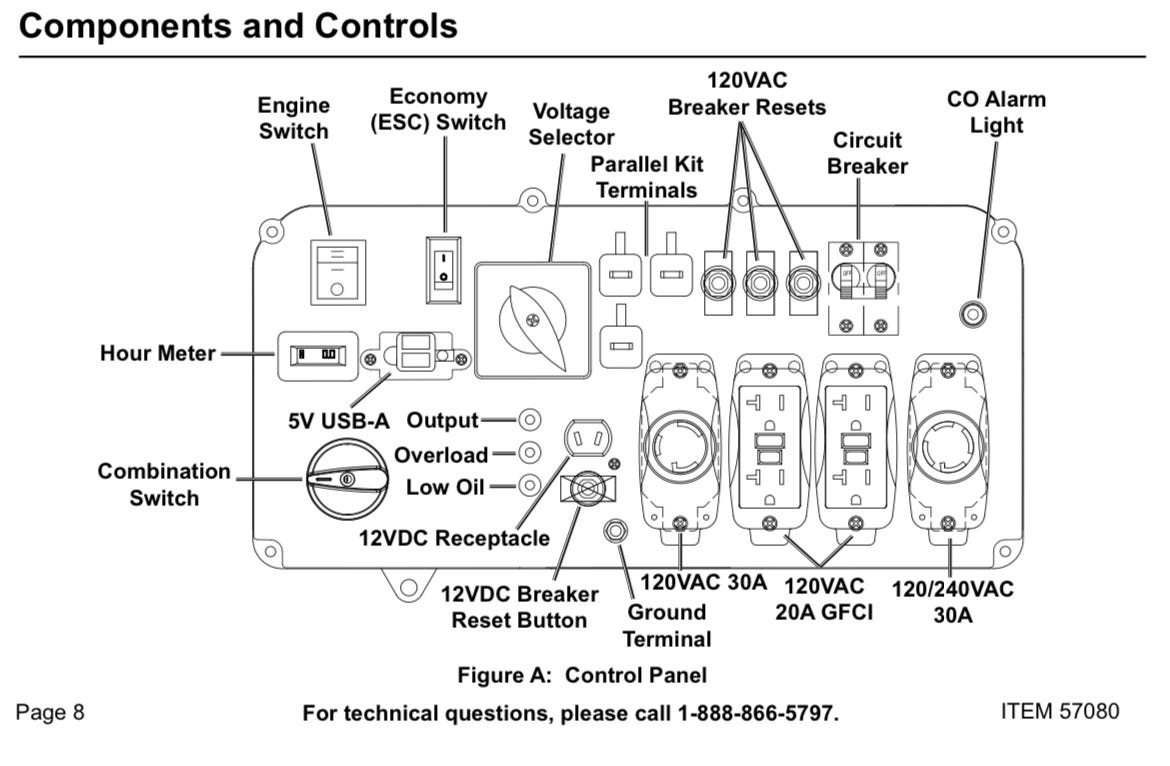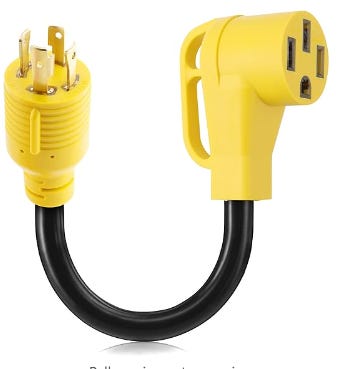Hooking up to a 120/240-volt generator
Don't build your own adapter cables. You can buy exactly what you need...
Everyone,
I needed to assist a help desk yesterday when an RV owner called in trying to connect his 50-amp shore power RV to a Predator 9500 inverter generator. He had bought a stock double 30-amp to 50-amp Y-adapter, cut off the male ends, and installed a 120-volt, 30-amp twist-lock plug plus a 15-amp plug. I don’t have a picture of what he built, but here’s the components



Here’s what he was plugging into
As you can see from the diagram below, the Predator 9500 generator has a variety of twist-lock and Edison blade receptacles. He was plugging his DIY adapter cable into the 3-prong 120VAC 30-Amp receptacle plus the 20-Amp receptacle. This was in attempt to make “50-amps” for his RV. Of course, this keep tripping the GFCI outlet and it wouldn’t work.
The right adapter
To plug your 50-Amp RV into a 120/240-volt generator you just need a stock 4-prong male generator plug to 14-50 female outlet like this one below. This dogbone adapter will properly route the 120/240-volt split phase power into the two separate 120-volt circuits that your 50-amp RV needs. You just plug it (and twist it) into the right-most 4-prong 120/240-VAC 30-amp outlet on the generator and you’re good to go. This provides 30-amps plus 30-amps of current at 120 volts, so that’s 7,200 Watts of available power for the RV. This should power most everything in your RV unless you get really power hungry.
And don’t forget to plug in your generator bonding plug if your RV has a built-in EMS surge protector.
I’ll do a full video on generator hookups later.
Please ask any generator hookup questions below and I’ll build in your answers to my video. I’ve been hooking up all kinds of generators for decades and it can be a bit tricky. But with a few simple rules it’s really straightforward.
Plus I’m thinking about doing a 5-minute video on why the USA uses 120/240-volt split-phase power, while much of Europe uses 230-volt single-pole power. It’s a fascinating part of our electrical history that will help you understand exactly how split-phase power works.
Lets play (and hook up) safely out there… Mike







that video on the history and evolution of 120/240 split phase power would be very interesting! please do it.
Can you comment on any issues with the F150 Onboard Power powering a TT?